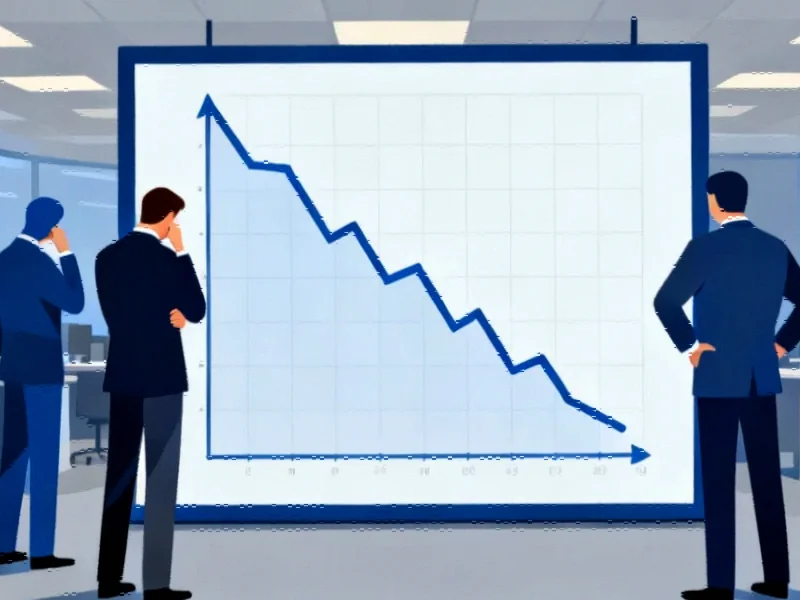When news emerged that China might postpone implementing sweeping rare earth export controls, markets breathed a sigh of relief. But industry veterans recognize this isn’t a diplomatic breakthrough—it’s a calculated pause in what has become the most sophisticated economic chess match of our time.
Table of Contents
The temporary reprieve comes as both economic superpowers prepare for their first presidential summit since 2019, with US Treasury Secretary Scott Bessent describing a “very positive” framework reportedly agreed upon during recent talks in Malaysia. Yet beneath the diplomatic language lies a stark reality: China has demonstrated its ability to weaponize supply chains, and America remains dangerously dependent on its strategic rival for materials essential to everything from electric vehicles to defense systems.
Table of Contents
- What This Really Means
- Understanding Rare Earth Dynamics
- The Business Case Behind the Brinkmanship
- Industry Impact and Market Realities
- Challenges and Critical Analysis
- What You Need to Know
- Future Outlook
What This Really Means
The reported delay represents classic Chinese negotiation tactics rather than genuine compromise. Beijing has effectively demonstrated its willingness to deploy the rare earth weapon while temporarily holstering it to extract maximum concessions during upcoming talks. This isn’t de-escalation—it’s strategic positioning.
Industry analysts note that China has played this card before, most notably during the 2010 territorial dispute with Japan when rare earth exports were suddenly restricted. The pattern suggests Beijing understands the psychological impact of demonstrating capability without necessarily following through immediately. The mere threat creates leverage, while actual implementation risks accelerating alternative supply development that would ultimately undermine China’s dominance.
What makes this situation different is the broader geopolitical context. With tensions spanning technology transfer, Taiwan, and military presence in the South China Sea, rare earths have become just one battlefield in a multi-front economic war. The delay allows both sides to claim diplomatic progress while preserving their most powerful economic weapons for future negotiations.
Understanding Rare Earth Dynamics
Rare earth elements comprise seventeen metallic elements crucial for modern technology, despite their misleading name suggesting scarcity. What makes them “rare” isn’t their abundance in the Earth’s crust but their economic concentration and the environmental challenges of extraction and processing.
China’s dominance in this sector didn’t happen by accident. Following decades of strategic investment and willingness to absorb environmental costs that Western nations largely avoided, China now controls approximately 60% of global rare earth mining and a staggering 85-90% of processing capacity. This vertical integration gives Beijing unprecedented leverage over global technology supply chains.
The historical context matters here. The United States was actually the leading rare earth producer until the 1990s, with the Mountain Pass mine in California supplying most global demand. Environmental regulations and cheaper Chinese production gradually eroded America’s position, creating the dependency we see today. This history explains why rebuilding domestic capacity features prominently in US industrial policy discussions.
The Business Case Behind the Brinkmanship
For China, rare earth export controls represent a high-risk, high-reward strategy. The immediate economic impact would be significant—China earns billions annually from rare earth exports—but the strategic value may outweigh short-term financial considerations. By threatening controls, Beijing forces global manufacturers to reconsider supply chain dependencies and potentially make long-term decisions that favor Chinese stability.
The timing is particularly revealing. With the US electric vehicle industry already showing signs of strain—investment reportedly dropped by nearly a third to approximately $8.1 billion in recent months—additional pressure on critical mineral supplies could cripple American ambitions in the clean energy transition. China’s calculated move comes as the Biden administration’s EV incentives face implementation challenges and consumer adoption rates fluctuate.
From Washington’s perspective, the threat of additional tariffs serves as counter-leverage, but this approach has limitations. Tariffs ultimately burden American consumers and manufacturers, whereas rare earth controls directly target industrial production. This asymmetry explains why the US finds itself in a challenging negotiating position despite having the world’s largest economy.
Industry Impact and Market Realities
The immediate beneficiaries of the delay include defense contractors, electric vehicle manufacturers, and consumer electronics companies that rely heavily on rare earth elements for permanent magnets in motors, batteries, and sophisticated electronics. Companies like Tesla, General Dynamics, and Apple can breathe temporarily easier, though supply chain diversification efforts will likely accelerate regardless of the diplomatic outcome.
Mining companies outside China stand to gain from renewed interest in alternative sources. Lynas Rare Earths in Australia and MP Materials in the United States have seen increased investor attention as geopolitical risks highlight the value of non-Chinese supply. However, these companies face significant scaling challenges and still depend on Chinese processing expertise for some production stages.
The longer-term impact may be most profound for recycling and substitution technologies. Startups focused on rare earth recycling from electronic waste are attracting venture capital, while materials science researchers are redoubling efforts to develop alternatives that reduce or eliminate rare earth dependencies. This innovation wave could ultimately undermine China’s strategic advantage, though meaningful commercial deployment remains years away.
Challenges and Critical Analysis
The fundamental challenge for both nations lies in balancing immediate economic interests against long-term strategic positioning. China risks accelerating the very supply chain diversification it seeks to prevent, while America faces the monumental task of rebuilding an industrial ecosystem that largely migrated overseas decades ago.
Environmental considerations present another significant hurdle. Rare earth processing generates substantial toxic waste, and Western nations have historically been unwilling to bear these environmental costs. Any serious effort to reshore production must address both regulatory frameworks and public acceptance of the necessary industrial processes.
The technological challenge shouldn’t be underestimated either. China’s processing dominance stems not just from lower environmental standards but from accumulated expertise and continuous process innovation. Catching up requires not just building facilities but developing institutional knowledge that takes years to accumulate. Recent efforts to establish processing capacity in Malaysia and Australia have faced both technical hurdles and local opposition, highlighting the complexity of the challenge.
What You Need to Know
Why are rare earth elements so strategically important?
These seventeen elements possess unique magnetic, luminescent, and electrochemical properties that make them essential for modern technology. Neodymium and praseodymium create the powerful permanent magnets in electric vehicle motors and wind turbines. Europium and terbium enable the vibrant colors in displays. Yttrium is crucial for various specialized applications from cancer treatments to military targeting systems. Their irreplaceable nature in current technologies, combined with concentrated supply, creates strategic vulnerability.
How realistic are alternatives to Chinese rare earths?
Alternative sources exist but face significant challenges. The Mountain Pass mine in California has resumed operations but still sends most of its output to China for processing. Australian and African projects are developing but require massive investment and years to reach meaningful scale. Recycling from electronic waste shows promise but currently recovers only a tiny fraction of demand. While diversification is theoretically possible, practical implementation faces economic, technical, and temporal barriers that maintain China’s dominant position for the foreseeable future.
What would actual export controls look like in practice?
China would likely implement a licensing system rather than an outright ban, allowing selective approval for favored customers while restricting others. This approach maximizes political leverage while minimizing economic self-harm. The system would probably feature extended processing times, increased scrutiny of end-use applications, and potentially export quotas rather than complete restrictions. Historical precedent suggests Beijing would maintain supplies to strategic partners while applying pressure to geopolitical rivals.
How does this affect broader US-China trade relations?
The rare earth situation exemplifies the complex interdependence characterizing modern US-China relations. Both nations need elements of what the other provides, creating mutual vulnerability that complicates outright confrontation. This dynamic likely explains why both sides appear interested in temporary de-escalation while continuing longer-term efforts to reduce dependencies. The rare earth issue doesn’t exist in isolation but connects to broader disputes over technology transfer, intellectual property, and regional security concerns.
Future Outlook
The temporary delay in rare earth export controls represents a pause rather than a resolution. Both nations will continue pursuing strategies to secure their positions—China through maintaining processing dominance and developing downstream industries, America through supply chain diversification and technological innovation.
The most likely medium-term outcome involves managed competition rather than either complete decoupling or harmonious cooperation. We’ll probably see continued investment in alternative supplies, accelerated research into substitution technologies, and periodic tensions around critical mineral access. The fundamental structural issues creating this dependency won’t disappear quickly, meaning rare earths will remain a geopolitical flashpoint for years to come.
What’s changed is the recognition on both sides that economic interdependence creates both vulnerability and leverage. The coming years will see continued efforts to manage these competing realities, with rare earth elements serving as both bargaining chip and strategic priority in the evolving US-China relationship.
Related Articles You May Find Interesting
- Musk’s Robot Army Gambit Reveals Tesla’s True Ambition Beyond Cars
- Brain’s “Pruning” Mechanism Emerges as Surprising Link Between Alzheimer’s and Epilepsy
- U.S.-Brazil Tariff Truce Signals Global Trade Realignment
- Astrobotic’s Griffin-1 Lunar Lander Pushed to 2026 Amid Commercial Space Race Intensifies



